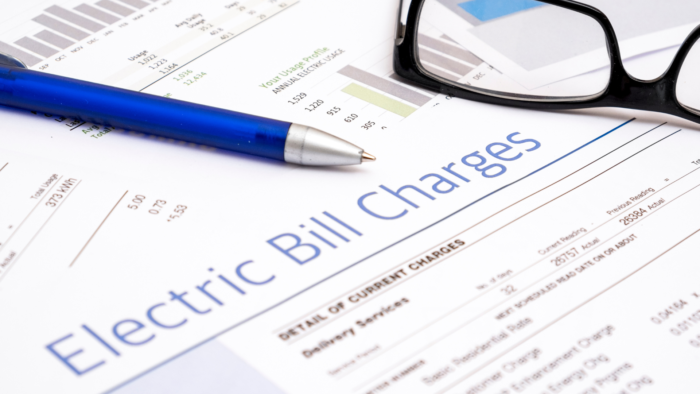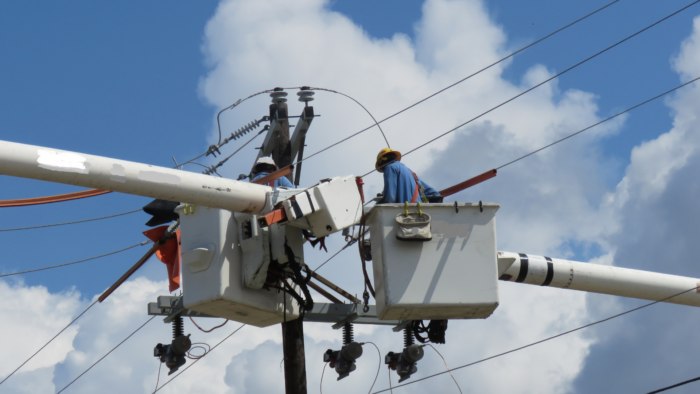Is your energy bill looking a little higher than usual? Energy prices are set by utility providers and are expected to rise as much as 50% in some states this summer. While this certainly is frustrating, the price increases aren’t permanent. We know that clean energy is critical in lower energy costs, not to mention reducing risks to our power grid and tackling climate change, but the sooner we deploy renewables and reduce our dependence on fossil fuels, the sooner we reduce the demand for natural gas and bring costs down.
Hope is on the horizon with the US on track to triple domestic solar manufacturing capacity by 2024. But for now, bills are high. Supply chain delays, utility upgrades, and expenses, and even foreign affairs are all contributing to the spike in your electric bill, here’s how.

Table of Contents
Supply Chain
Global supply chain issues are impacting our economy and daily lives on all fronts. From emptier shelves at your local grocery store to longer lead times for deliveries, and, more recently, nationwide shortages on essentials like baby formula. We’re all still recovering from the disruptions caused by the COVID-19 pandemic, and industries are no different – many are now facing supply chain issues that came about as a byproduct of a global health crisis.
Transportation has been hit especially hard. The combination of workforce shortages and high fuel prices has drastically reduced operational capacity and increased the transportation cost of all goods, which ultimately affects you, the consumer. If the cost of transporting goods is increasing, then the cost of the goods for end-users is increasing.
So, how does this affect our electric rates? Local utilities are experiencing drastically longer lead times and higher prices for critical grid equipment such as transformers, fiber-optic cables, conduits, fuses, and other parts necessary for grid maintenance. Lead times for new transformers alone jumped from three months to a year! You probably didn’t know that manufacturers rely on a specific type of steel that is primarily sourced from overseas to produce transformers. Now these steel plants are facing labor shortages, making it increasingly harder to keep up with grid maintenance, especially in areas facing major population growth – which is most of America.
In addition to longer lead times, some utilities had to dig into emergency stocks last year because of events resulting from the climate crisis. This means transformer manufacturers need to produce even more in order to fill depleted emergency stocks. Transformers even doubled in price last year due to high demand and shortages in materials, further snowballing utility operations costs.

Utilities upgrading grids and resilience
An increase in natural disasters and severe weather due to climate change in recent years has put our outdated electric grid in the hot seat. Wildfires, hurricanes, snow storms, and other weather-related disasters have left many Americans without power while occasional blackouts and brownouts have become the norm.
Hurricane Ida left 1.2 million customers across eight states without power in 2021. New Orleans residents lost power for over a week after Ida knocked out all eight transmission lines that bring electricity to the city. Texas’s power grid failure last year left millions without power. A grid overhaul is crucial for the safety and quality of life for Americans.
Luckily, that’s just what our grid is getting! Utility companies are spending billions on upgrading the electric grid to replace and modernize aging infrastructure to prevent future outages like the ones resulting from the Texas freeze and Hurricane Ida. Unfortunately, utility upgrades will come at a cost to consumers in the form of higher electric bills for a little while.
While it does come with a hefty up front price tag, upgrading the electric grid is absolutely necessary and will make our country more resilient to climate change – and lower bills in the future. Unprecedented weather crises are increasing in frequency with rising global temperatures. By electrifying the country and switching to 100% carbon-free electricity, we’re taking the necessary steps to combat climate change while also creating a cleaner, healthier future for all.
Foreign Affairs
The price of electricity is dependent on the cost to generate electricity. Resources that create energy can be renewable sources like solar (our personal favorite), wind, or hydro, but could also be fossil fuels like coal, oil, or natural gas. The price of commodities around the world will have an effect on the price of electricity since those commodities (gas and oil) are burned to produce about 40 percent of America’s electricity.
It’s important to note that the U.S. isn’t the only country seeing higher rates. One reason we’re seeing a spike in electric rates is because of the conflict in Ukraine which has driven up the already high cost of natural gas and oil around the world.
Natural gas is the main source of energy in Europe where 40% of its supply came from Russia. Now, Europe (along with the US and others) is working to end its dependence by reducing demand and securing supplies from other countries which is causing an increase in the price worldwide.
Recently, President Biden announced the release of 180 million barrels of oil from our national petroleum stockpile to give us some relief from high prices, and announced an Executive Order to make it easier to produce batteries in the United States, which will be critical to making electric cars and trucks more affordable – these measures could both help ease the burden at the gas pump, potentially making gas a little more affordable, both for us and energy providers.
The clean energy industry is quickly adapting to the global events affecting the solar market. The administration is working to boost domestic production of solar panel parts, building installation materials, high-efficiency heat pumps, and other components needed to further the clean energy movement. Boosting our domestic solar and clean energy markets will help local utilities and developers upgrade our grid faster to prevent further issues like blackouts and brownouts.

Community Solar Gives a Breath of Relief
High bills are painful, but the good news is that renewable energy sources like community solar actually help fight rising energy costs. The clean energy transition will give us real energy independence for future generations – not to mention a safer climate. The sooner we deploy renewables across the nation and reduce our dependence on fossil fuels, the sooner we reduce the demand for natural gas and bring costs down.
Even with a bright future filled with sustainable energy, today’s renewable energy (like rooftop solar) is still not attainable for many due to housing, location, credit and many other factors. Solstice is working hard to bring access to every American through community solar. Solstice subscribers are enjoying up to 10% savings on their monthly utility bills thanks to clean energy generated by a local community solar farm. This year we expect more people to enroll in community solar than ever before to combat higher bills. We’re in this with you, and we recognize that 10% is not going to completely off-set higher energy costs, but it’s still a savings, and signing up take just a few minutes.




